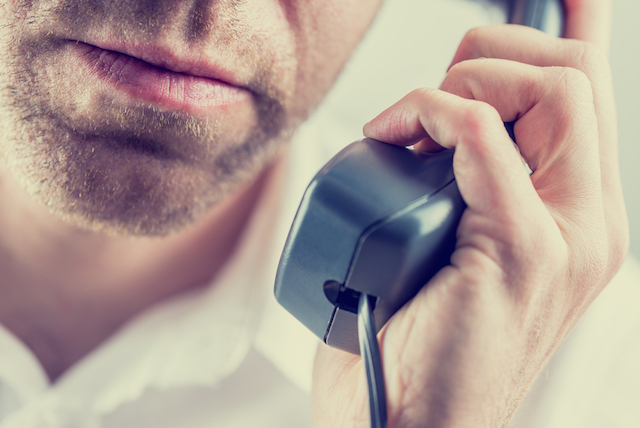Buying and selling on eBay can be great, but it can also be fraught with risk. Here are some of the most common eBay scams and how they can be avoided.
eBay scam 1: Buying an expensive photograph
How it works:
Possibly the most frustrating - and unbelievable - eBay scam out there, this has made headlines in the UK twice in the last year. Sellers list a high-demand item like an Xbox One or a Macbook, and when the unsuspecting buyer wins the auction, the seller posts a printed photograph of the item: claiming that ‘technically’, that is what the listing was all along.
How to avoid it:
Read the listing fully, and be suspicious of anything that sees you winning a brand new piece of technology for less than you expected - a common trait of both examples above. Moreover, check out the seller - if their other listings and history are pretty blank, they may have signed up recently just to pull this stunt. Fortunately, victims of this kind of fraud have usually got a refund from eBay.
eBay scam 2: The fake PayPal account
How it works:
Selling an item, you receive the customary email notification from PayPal that your buyer has paid, and duly mail them the goods. But you’ve been scammed – the email was a carefully designed hoax, and there’s no money in your account.
How to avoid it:
Check your PayPal balance, rather than just believing the email - and don’t click links in the email either, but go to PayPal separately. Also, check that the PayPal email doesn’t mysteriously arrive before the eBay email notifying you of a sale - eBay’s messages should always come through first. Scrutinize the emails, including the senders address - although because eBay and PayPal messages are totally automated, they can be convincingly duplicated.
eBay scam 3: The copycat car
How it works:
Buying a car on eBay, you’ve been persuaded by the seller to complete payment outside of eBay. You’re in love with the car, so you make a payment and head off to collect your new vehicle. When you get there, the car’s there, but the seller has no idea who you are, and says that it wasn’t listed on eBay, or that no-one has paid for it. Your ‘seller’ has duplicated a genuine listing - either from eBay or another second-hand car site - masqueraded as the owner of the vehicle, and vanished with your money.
How to avoid it:
Payment on collection, for a start. Before it gets to that stage, however, check out the seller’s profile - is it brand new? What’s their feedback like? Also, talk to them. Ask for extra pictures and details about the car - anything not provided with the genuine listing, they will be unable to give you.
eBay scam 4: The bait and switch
How it works:
You’re selling a common item - an iPhone, perhaps. A buyer wins your auction, pays up and you ship them. So far, so good. Then, however, they get in touch with photographs of a iPhone with a broken screen, claiming that you sold them a dud, or that they broke in transit. They complain to eBay, and with nothing but your word against theirs, eBay sides with the buyer (it’s called the Buyer Protection Policy) and forces you to issue them a refund. They’ve got your fully-functional ‘phones AND your cash.
How to avoid it:
Tough one - if you’ve been stung by it, it’s too late. The best defence is pre-emptive: make sure you ship valuable items with insurance, that the buyer pays for. It’s possible to list with ‘no refunds’ but may deter genuine customers.
eBay scam 5: Dude, where’s my car?
How it works:
eBay’s Buyer Protection scheme doesn’t count on motor vehicles - so, there’s nothing to stop an unscrupulous seller ‘doing a runner’ if you’ve paid out in advance for a car. They’ll simply disappear with your money.
How to avoid it:
Firstly and most easily: pay on collection only. Be wary of any seller who insists on advance payment. Don’t get lured in by a good deal, or insistences that you must deal through eBay. Use PayPal with a credit card, so you’re entitled to a degree of protection over your transactions if it does go south.
eBay scam 6: The forced refund
How it works:
You’re selling something valuable - often something large and inconvenient to post. The buyer arranges to collect from you in person, but pays beforehand by PayPal. Thinking the money is safely in your account, you happily hand over the goods - then, the next day, PayPal informs you the transaction has been reversed. The money never came from the buyer in the first place - instead, it came from a hacked account, probably thanks to a PayPal phishing email hack.
How to avoid it:
Simple: insist that the buyer pays cash on collection. Don’t be lured by the prospect of an instant payment; cash is a lot harder to fake.
eBay scam 7: The phone call collection
How it works:
A variation of the above scam. You’ve sold an item with shipping, but after the sale the buyer calls you and says he/she would rather collect it in person, as they’re going to be in the area. In the meantime, they pay via PayPal for the full amount, and you agree to deduct the postage costs when you meet. Days later, they file a request for a refund, saying they haven’t received the item. Because eBay and PayPal have a record of the transaction with postage, they need proof that you sent the item in the mail - which, of course, you can’t provide. You’re backed into giving them their money back - plus the postage they never paid.
How to avoid it:
Stick to the plan - post the item as planned. Failing that, make sure there’s a written record of your arrangement to meet up and, to be extra-cautious, take a photograph of them with the item once the sale is concluded.
Gil C & OlegDoroshin / Shutterstock.com
Read next:
Not all cybercriminals are sophisticated
Buying a secondhand device? Here’s what to keep in mind






